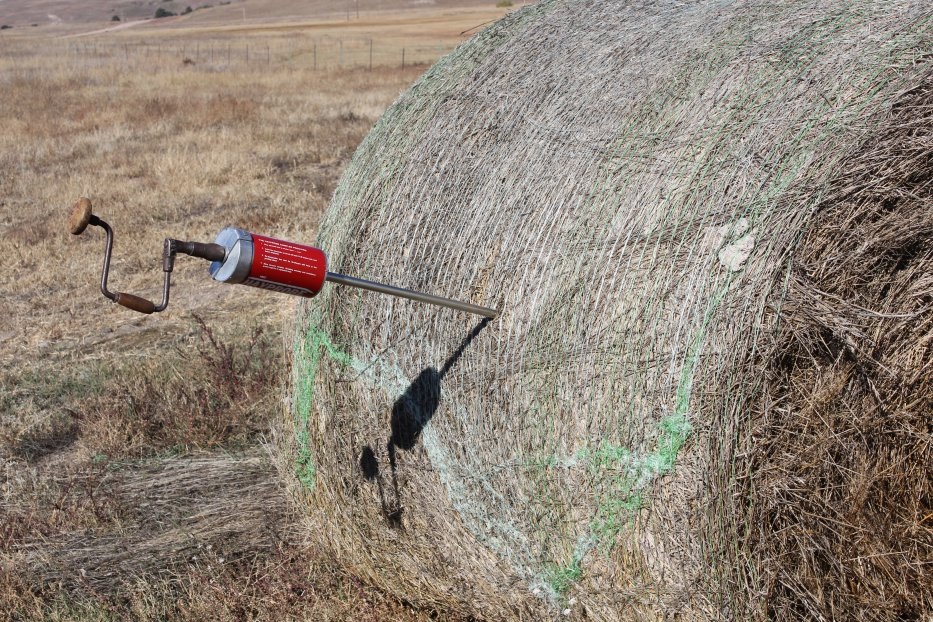Forage Testing Can Save Dollars

Listen to a discussion of the content in this article on this episode of the BeefWatch podcast. You can subscribe to new episodes in iTunes or paste http://feeds.feedburner.com/unlbeefwatch into your podcast app.
As cow-calf producers strive to reduce feed costs by finding different avenues to increase grazing days, many still have to use harvested forages in their year-round feeding program. Sampling and testing forages for quality can make designing a feeding program easy and economical. Nutrient concentration can vary considerably in feeds especially forages. Protein in alfalfa hay can range from 10-25% on a dry matter basis and grass hay will contain between four and 18 percent protein. Using book values to balance rations can result in many times over or under feeding certain nutrients.
The most imported factor that impacts forage quality is maturity at harvest. As the plant matures, fiber concentration increases. Fiber is less digestible than other plant parts and fiber digestibility declines as plants mature. Both of these factors cause the concentration of energy in plants to decline as maturity advances. Protein concentration also declines as plants mature.
Getting a representative sample, packaging it properly for transport, knowing what to test for, and understanding the analytical numbers are the critical points.
Sampling and Packaging
It is important that samples closely resemble the entire “lot” of forage. A “lot” of forage consists of forage harvested from one field at the same cutting and maturity. All forage from the same lot should be similar for:
1. Type of plant
2. Soil type
3. Cutting date
4 Maturity
5. Variety
Sample baled hay after curing (usually 17 to 21 days after baling}, using a probe. Such an instrument is essential for collecting a representative sample and most commercial labs will not accept a “grab sample” of hay. For large round or square bales, the probe should penetrate at least 18 inches into the bale and have an internal diameter of at least 3/8-inch. If the probe is 18 inches or longer, 15 large round bales should be adequate if the “lot” size is 30-40 bales. Collect one sample from each bale by coring straight in from the center of the end of square bales and from the wrapped circumference of round bales. Place the entire sample into a plastic bucket and mix around and then fill a plastic zip-lock bag for transport. For chopped or ground hay, collect about 10 small samples during the grinding process and place them in a plastic bucket for mixing then place the sample into a zip-lock bag for transport. If you are sampling a pile, take about one-fourth of the samples from the top half of the pile and the rest from the lower half.
Label the bag with your name, address, lot ID, and type of material in the bag. Most testing labs provide a description sheet to report this information and to request the desired test. Freeze samples containing over 15 percent moisture until shipping and store dry samples in a cool location.
Livestock producers should set aside high-quality hay for those animals in need of high nutrient requirements, such as young animals and females in the last one-third of gestation or in the early stage of lactation. Poor quality hay should be reserved for animals with lower nutrient requirements, such as females in early gestation after weaning, or animals that could use additional fiber in their diets.
The most important things to test for are: Moisture Content, Energy Value, and Protein Value. Depending on location and needs, money also can be saved in such a situation as selling feed of a higher value. For more information see Sampling Feeds for Analyses.

Interviews with the authors of BeefWatch newsletter articles become available throughout the month of publication and are accessible at https://go.unl.edu/podcast.
